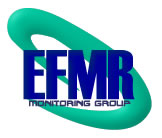Thursday, September 23, 2010
DEP Announces Start of Tritium Cleanup at Oyster Creek
State of New Jersey
Department of Environmental Protection
For Immediate Release
(10/P94) TRENTON - The first phase of a cleanup of radioactive tritium that leaked from the Oyster Creek nuclear power plant last year and into two aquifers below the facility will begin immediately, with a goal of pumping the tritium contaminated water out of the ground to avoid any potential contamination of potable water supplies, Commissioner Bob Martin announced today.
The Exelon Corp. has agreed to start pumping efforts this week on two monitoring wells which are in the Cape May and upper Cohansey aquifers, and also has agreed to expand that effort to a third contaminated location by early October.
"We have asked Exelon to expedite this effort, to clean up this radioactive material as quickly and efficiently as possible to ensure public health and the safety of our drinking water supplies,'' said Commissioner Martin. "Radioactivity has not been measured beyond the boundaries of the nuclear plant or anywhere near a potable water source. Our intention is to make sure that never happens.''
Commissioner Martin said he is encouraged by the Exelon's cooperation with the State in dealing with the tritium issue, especially their willingness to expedite the cleanup process and explore remediation alternatives. But he also pledged that the DEP will carefully monitor the work to make sure it is done properly.
In May, Commissioner Martin announced the launch of a State investigation into the 2009 leak of radioactive tritium into the aquifers below Oyster Creek, which is located in Ocean County. Toward that goal, the DEP issued a Spill Act directive to Exelon, requiring the plant owner to cooperate with the DEP's investigation and take action to prevent the radioactive substance from ever reaching the region's potable water supplies.
In June, Exelon documented levels of tritium in the monitoring wells located in the Cohansey aquifer that exceeded 1 million picuries per liter (pCi/L), as compared with an EPA health-based standard of 20,000 pCi/L. Those levels have since declined markedly, according to information provided Exelon, but are still above acceptable standards, including nearly 700,000 picuries at two locations in the Cohansey and Cape May aquifers.
At a meeting today in Trenton with Commissioner Martin, company officials outlined plans to immediately start pulling contaminated water from the ground below the nuclear generating station to control any further migration of the tritium plume which is currently flowing uncontrolled towards the plant's discharge canal.
That water will be pumped into drums and transferred to a large holding tank on site, eventually to be diluted into massive volumes of water used daily for cooling the power generating process. The mixing effort will bring the tritium levels below detectable standards. This will be confirmed with surface water monitoring in the discharge canal, with the results to be shared with the public.
The plan also calls for continued regular monitoring and analysis of the content of the water pulled from the ground, and careful observation of groundwater levels in the area near the nuclear plant. In addition, scientists are developing a backup plan, if needed, to supplement the work that is starting this week.
Preliminary results from groundwater monitoring wells so far indicate that tritium has not reached the clay bottom of the lower portion of the Cohansey aquifer and has not been detected in any of the wells in the even deeper Kirkwood aquifer. The tritium plume appears to be moving toward Oyster Creek's discharge canal, but no samples taken from the discharge canal have indicated the presence of tritium.
Tritium occurs as a by-product of nuclear power plant operations, and tritium leaks are not uncommon at nuclear power plants nationwide.
Exelon had taken some steps prior to the DEP's previous directive, including drilling additional monitoring wells to identify the extent of contamination. The company also committed to move all pipes containing radioactively contaminated water either above ground or into concrete vaults to avoid similar leaks by the end of 2010, and those upgrades are on track to be completed before the end of the year.
Subscribe to:
Post Comments (Atom)

No comments:
Post a Comment